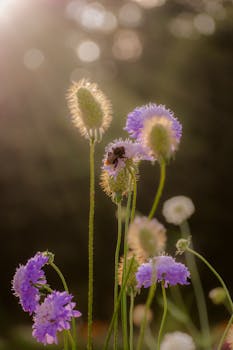Creating outdoor materials allows individuals to enhance their living spaces and engage with nature. With the right resources and a bit of creativity, anyone can design functional and aesthetically pleasing outdoor materials.
This guide provides insightful approaches to create outdoor materials that fit various preferences and requirements. Whether you’re looking to build simple furniture or elaborate landscapes, the following sections will empower you to get started.
Outdoor materials serve numerous purposes, including landscaping, furnishing, and decoration. Understanding how to source, create, and maintain these materials is essential for any outdoor project.
Understanding Outdoor Materials
Outdoor materials encompass a variety of elements, including wood, stone, metal, and even recycled materials. Each type has distinct characteristics and uses, allowing for versatile applications.
Wood is one of the most popular outdoor materials due to its natural beauty and durability. It’s commonly used for furniture, decking, and structural elements like pergolas.
Stone, on the other hand, is revered for its strength and permanence. It is often employed in pathways, walls, and decorative features that require a robust foundation.
Metal, such as aluminum or stainless steel, is frequently used for modern outdoor furniture due to its sleek appearance and resistance to weathering. These materials can be lightweight yet sturdy.
Recycled materials, including plastic composites or reclaimed wood, offer eco-friendly options that can reduce waste while providing unique aesthetics. They are increasingly popular among environmentally conscious builders.
Choosing the Right Materials
When creating outdoor materials, it’s vital to select materials that suit your project’s specific requirements and location. Consider durability, maintenance, and environmental impact when making decisions.
For instance, untreated wood may require regular sealing and maintenance, while treated wood can resist pests and decay longer. Your climate and location will influence this choice.
Additionally, consider the intended use of your outdoor features. Materials for a pathway should be durable and withstand foot traffic, while garden decorations can be lighter and more decorative.
Budget plays a significant role in material selection as well. Identifying affordable options without compromising quality is crucial for project success.
Research different material suppliers locally to find the best prices and quality, ensuring you have a clear understanding of the options available for your project.
Planning Your Project
Before diving into your outdoor materials project, create a detailed plan that outlines your vision and guides your efforts. This includes selecting styles, dimensions, and layouts.
Start by sketching your ideas on paper or using design software. Visualizing your project will help clarify details and prevent costly mistakes down the line.
Next, identify any necessary tools or equipment needed for fabrication. Common tools include saws, drills, hammers, paintbrushes, and safety gear to protect yourself during construction.
Additionally, develop a timeline for your project, ensuring you allocate sufficient time for each stage. This will help keep you organized and on track.
Finally, remember to gather any required permits if your project involves significant landscaping or structural alterations. Always check local regulations before starting your project.
Gathering Tools and Equipment
Having the right tools and equipment is essential for creating outdoor materials safely and effectively. Begin by assessing your existing tools to determine what you need.
Basic tools often required include a tape measure, level, saw (hand saw or power saw), drill, and various hand tools like pliers and wrenches. Safety equipment, such as gloves and goggles, is also extremely important.
For larger projects, renting or investing in heavy machinery like concrete mixers or augers may be necessary. Check with local rental services for availability and pricing.
Take the time to familiarize yourself with each tool’s operation and safety features, especially if you’re trying a new piece of equipment. This knowledge will help you avoid accidents.
Finally, consider organizing your workspace to ensure easy access to your tools. A well-organized environment improves efficiency and can enhance your overall project experience.
Creating Outdoor Furniture
Outdoor furniture can transform a space into a comfortable retreat. Building your own allows for customization and personalization to meet your specific needs.
Start with selecting weather-resistant materials like teak, cedar, or marine-grade plywood for longevity. These woods tolerate moisture and resist decay better than many other options.
Design cushions using outdoor fabrics to add comfort. Ensure they are water-resistant and fade-resistant to maintain appearance over time. Fabric choices play a crucial role in style and longevity.
Measure your desired furniture dimensions carefully, then cut and assemble the materials as needed. Following detailed plans or guides can help simplify the process.
Finishing touches like sealants or stains can enhance the appearance and lifespan of your furniture. Regular maintenance will help keep your outdoor furniture looking new.
Implementing Landscaping Elements
Landscaping elements contribute to the overall aesthetics of your outdoor area. Flowers, trees, pathways, and decorative features can elevate the beauty of your space.
Start with native plants that are suited to your region’s climate and soil conditions. Native species generally require less maintenance and encourage local wildlife, enhancing biodiversity.
Pathways can be made from stone, gravel, or wood, depending on your desired look and functionality. Ensure they are durable and provide a safe walking surface.
Vertical elements such as trellises or screens can create visual interest and separate spaces effectively. Using materials like wood or lattice can contribute to the overall design.
Consider adding water features like fountains or small ponds to promote relaxation and attract wildlife. These elements can transform the ambiance of your outdoor area dramatically.
Maintaining Your Outdoor Materials
Once your outdoor materials are created and installed, ongoing maintenance is crucial to ensure a long-lasting and appealing space. Regular upkeep prevents wear and tear.
For wooden features, regularly inspect and reapply protective sealants or stains to prevent decay. Additionally, cleaning your furniture regularly will prevent dirt buildup.
Stone and concrete features require minimal maintenance; however, periodic cleaning will help maintain their appearance. Remove weeds from pathways and consider resealing to prevent staining.
For vegetation, seasonal maintenance such as pruning, weeding, and mulching will help plants thrive. Understanding plant needs ensures a lush and vibrant landscape.
Keep a checklist for seasonal maintenance tasks to stay organized. Regular attention to your outdoor materials will prolong their life and maintain their beauty.
Conclusion
Creating outdoor materials enriches your living space while providing functionality and enjoyment. With careful planning, the right materials, and regular maintenance, anyone can achieve stunning results.
Whether building furniture, landscaping, or crafting decorative elements, following this guide will help you understand each step of the process. Empower yourself to create and enjoy beautiful outdoor spaces.
So, gather your materials, tools, and inspiration, and get started on your outdoor project today. Embrace creativity and make a connection with nature right in your backyard.


